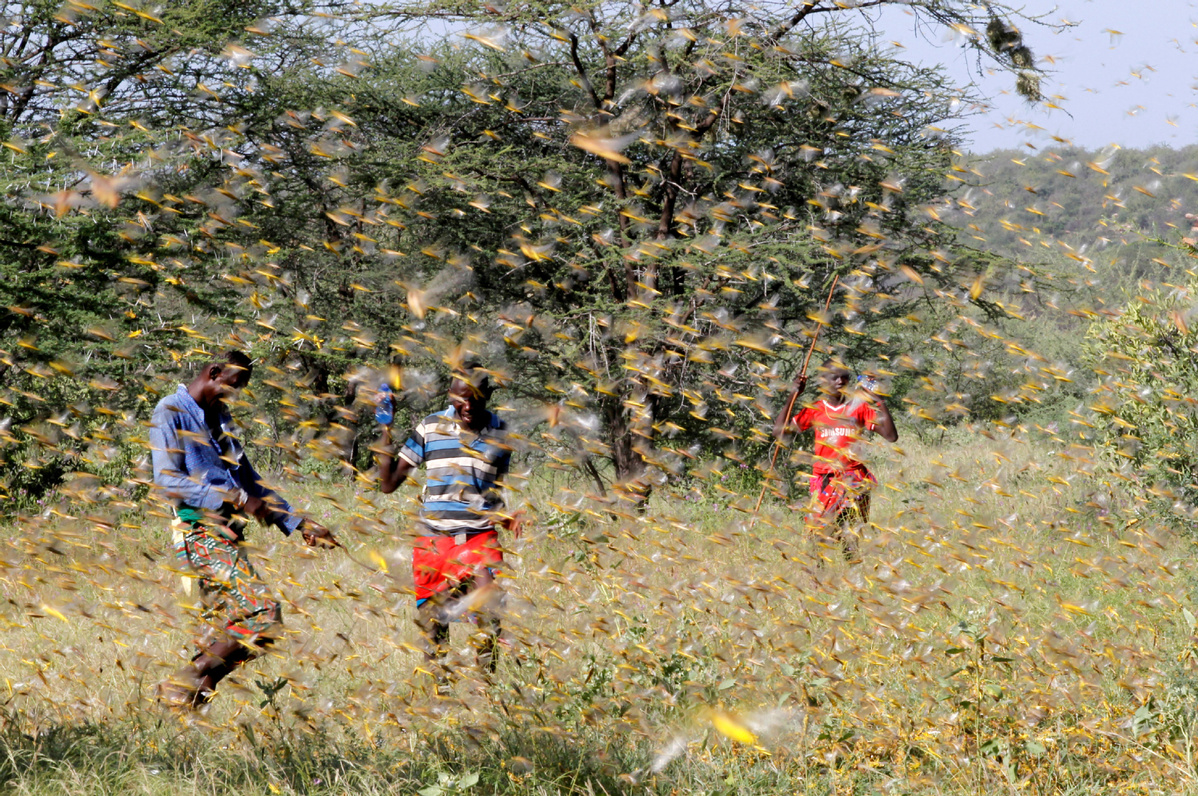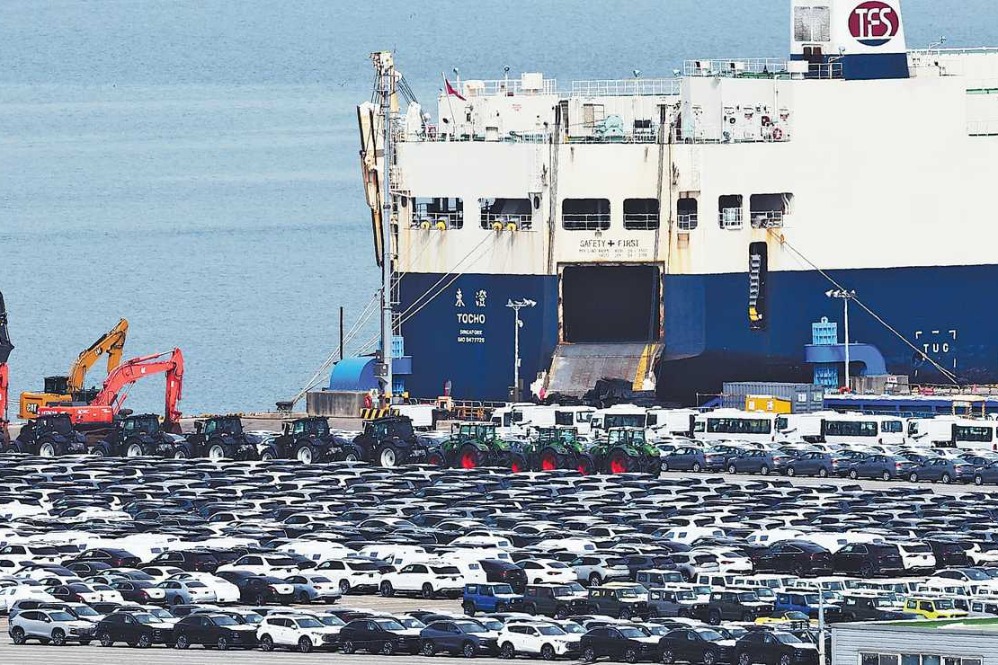E. Africa grappling with climate change


The recent scourge of locusts has brought into sharp focus the discussion of climate change and its effects on East Africa.
This is especially so against the backdrop of severe drought and torrential rains that preceded the locust invasion, which are uncharacteristic of the Horn of Africa's environment.
Kenya has not experienced desert locusts of this proportion for more than half a century, but it now joins Ethiopia and Somalia in bearing the brunt of crop devastation wrought by these pests. South Sudan and Uganda are also said to be at risk.
Food and Agriculture Organization Director-General Qu Dongyu has warned that with the destruction of tens of thousands of hectares of crops by locust swarms, food security in the subregion is under threat.
Rain-fed agriculture is a significant economic activity in the region. In Kenya, agriculture accounted for 26 percent of GDP in 2019.
Of key interest is the revelation that the intersection of two crucial factors precipitated the current locust crisis: climate change in Saudi Arabia and violent conflict in Yemen. According to Keith Cressman, the FAO's senior locust forecasting officer, months of uncharacteristic rains in an uninhabited area in southern Saudi Arabia provided a conducive environment for the desert locusts to breed.
Subsequent drought caused their migration into Yemen, whose ongoing war meant non-eradication of the insects, which then crossed over into Africa and are now wreaking havoc across the Horn of Africa.
It is estimated that by 2050, over 500 million people will experience increased water stress resulting from climate change.
The Horn of Africa is already marked by conflicts arising from resource scarcity.
In 2007, Ban Ki-moon, then United Nations secretary-general, described the conflict in Sudan's Darfur region as the world's first climate change conflict. The assumption was that water scarcity from changed rainfall patterns resulting from climate change had contributed to this conflict.
In addition, climate processes such as water scarcity, desertification and salinization of agricultural land triggered the migration of human populations.
The late British environmentalist Norman Myers once estimated that by 2050, approximately 200 million people could in some way become environmental refugees, having been forced to migrate due to the effects of disrupted rain patterns, droughts, rising sea levels and coastal flooding.
There also has been a debate over the connection between climate change and violent conflict.
Vesselin Popovski, head of the United Nations University Institute for the Advanced Study of Sustainability, has argued that warlords exploit natural disasters for political and economic reasons, thus stirring conflict.
In their essay Climate Change and Violent Conflict in East Africa, Sebastian Van Baalen of the Department of Peace and Conflict Research at Uppsala University and Malin Mobjork of the Stockholm International Peace Research Institute probed the connection between climate change and violent conflict.
In reviewing how climate change may influence the risk of conflict, they said there are four main links that can be drawn: worsening livelihood conditions, increased migration, tactical considerations by armed groups, and exploitation of local grievances.
Previous studies had found that climate change had decreased the availability or quality of fresh water, degraded grazing lands, killed livestock and damaged cropland. As a result, populations' livelihoods were affected, which resulted in violent interactions.
In addition, for many populations, livelihoods are linked to the resources readily available to them, and if these are compromised, such populations are likely to migrate in search of those resources.
Finally, the risk of violent conflict has seemed to increase based on opportunities presented by the effects of climate change.
These linkages serve as an apt foundation when considering disaster management measures and peace efforts in tackling climate change effects on local communities in East Africa.
The author is senior associate at the Africa Policy Institute. The views do not necessarily reflect those of China Daily.

































